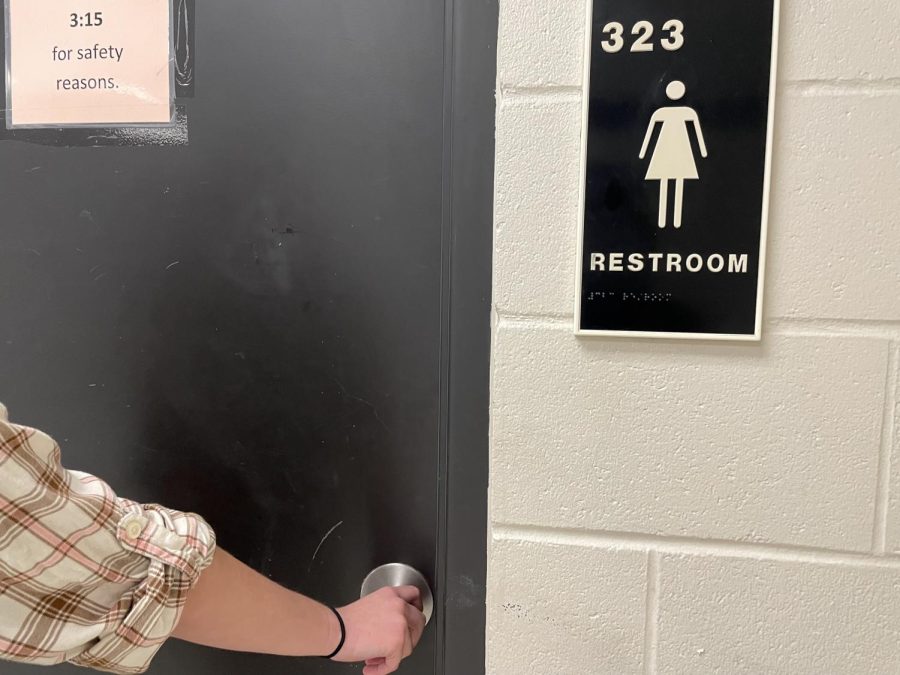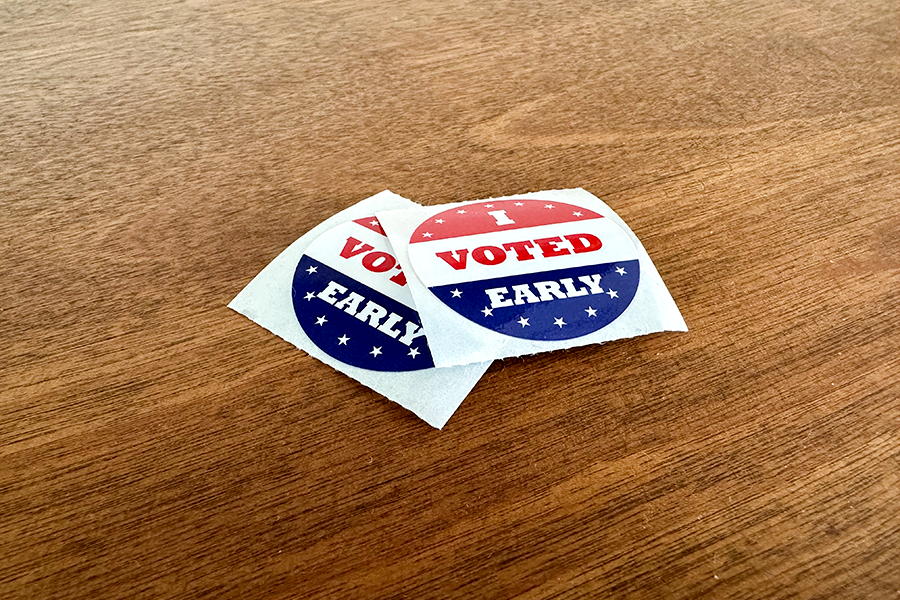South’s bathrooms remain out of commission despite the needs of students
Student tries to open the locked bathroom door. The bathrooms have struggled to stay open, causing students to not have access to the bathroom during the school day. “The bathroom situation is awful, it’s really disruptive,” says Naihomi Reyes.
June 10, 2023
South has always had ongoing issues with its bathrooms, which have been expedited as of late. Beyond the South bathroom’s need for structural improvement and support, there have been issues with students skipping class and spending time in the bathrooms. Because of this, the bathrooms can often be found locked and unavailable. This has brought a host of problems including students being late to class, students being unable to use the bathroom until they get home from school, and deepening conflicts within the school. This problem is an inconvenience to everyone at South. Val Dieter, a sophomore at South says, “[I think that] it’s causing arguments between students and staff. [The staff] should at least give us other options.”
The reasoning for the bathrooms being closed has mostly been attributed to students vaping, smoking, and skipping class in the bathrooms. In order to crack down on these behaviors, the school has locked certain bathrooms which has, in turn, left many students with little to no options when they actually need to use the bathroom. When the options are limited, students either have to wait in line at an open bathroom, ask a teacher to open the staff bathrooms, or to use the bathroom in the nurse’s office. All of these options keep students away from class and can put them in complicated situations. Naihomi Reyes, a 10th grade english and AP Lang teacher says, “The bathroom situation is awful, it’s really disruptive…I’m on the third floor, and at first [a student needing to go the the girls bathroom] had to walk all the way downstairs, across the commons to the bathrooms off of the cafeteria. They would be gone for 10-15 minutes, and that’s class time they can’t get back.”
South bathrooms are not only struggling to stay open, but they are often entirely unusable. Most of the bathrooms are unclean and lacking resources like toilet paper, paper towels, and soap. Dieter says, “[The bathrooms] are definitely not clean. The gender neutral bathroom didn’t have soap for 2 whole months.” Students needing the bathroom may be subject to unhygienic standards and have to spend even more time away from class in order to find the resources that the bathroom is lacking. It is fair to assume that the bathrooms being closed may also be attributed to hygiene concerns at times. Reyes says, “It feels like the students are being punished because we don’t have enough engineers. That’s not South’s fault, that is a deeper issue.”
Students needing support in some way may find the bathroom to be a safe space away from class. Reyes says, “The bathrooms are not the issue, they’re a symptom. Why do you feel like you can’t be in your classroom? Why do you feel like you can’t be successful?” The school’s decision to close the bathrooms does not fix core issues that students are facing, instead only removing the option to deal with them in a tangible way. While deciding to skip class, smoke and hang out in the bathrooms may seem like typical ‘rebellious’ highschool behavior, chances are the students participating are dealing with some type of personal issue that causes them to feel like they need to get away from class. When the bathrooms are closed, these students may choose to hang out in parts of the school that disrupt classes or they may choose to leave school altogether. In order to stop students from skipping class, the solution may be more complicated.
Most of the bathrooms have been closed at some point, however students using the womens, gender neutral and third floor bathrooms are disproportionately affected by this. Certain demographics of students may need the bathroom more, have already limited options for what bathrooms they can use, need the large single stalls that are only in certain bathrooms or are in classes far from open bathrooms. Dieter says, “[It’s hard] when the gender neutral bathroom is closed. [It] affects everybody. I feel like it’s weird to restrict people’s bathroom usage. I don’t think that’s okay, [being able to use the bathroom should be a given].” It can take even longer for these students to use the bathroom and get to class, which gives them a disadvantage compared to other students in their class.
There are possible solutions the school could take up to help aid the bathroom situation. Reyes said, “Students last year suggested creating a [student lead] outreach club or committee, [the idea being that] if students are invested in these common spaces, they would be more likely to respect them…you can also identify who [is spending time in the bathrooms, and who needs support].” Other possible solutions for the school would be to look deeper into the root of the issues students are facing which cause them to leave class. As for the bathrooms themselves, the school needs to consider how to get consistent resources supplied to the bathrooms. It’s unclear whether the resource issue is a result of a lack of school funding, or a lack of janitors, but it’s an issue the administration should put energy into.
Having access to bathrooms where you feel safe and respected is important and valuable to students. Fixing the bathrooms will be a longer process, but it is a step the school can take in order to mend the relationship between staff and students.






